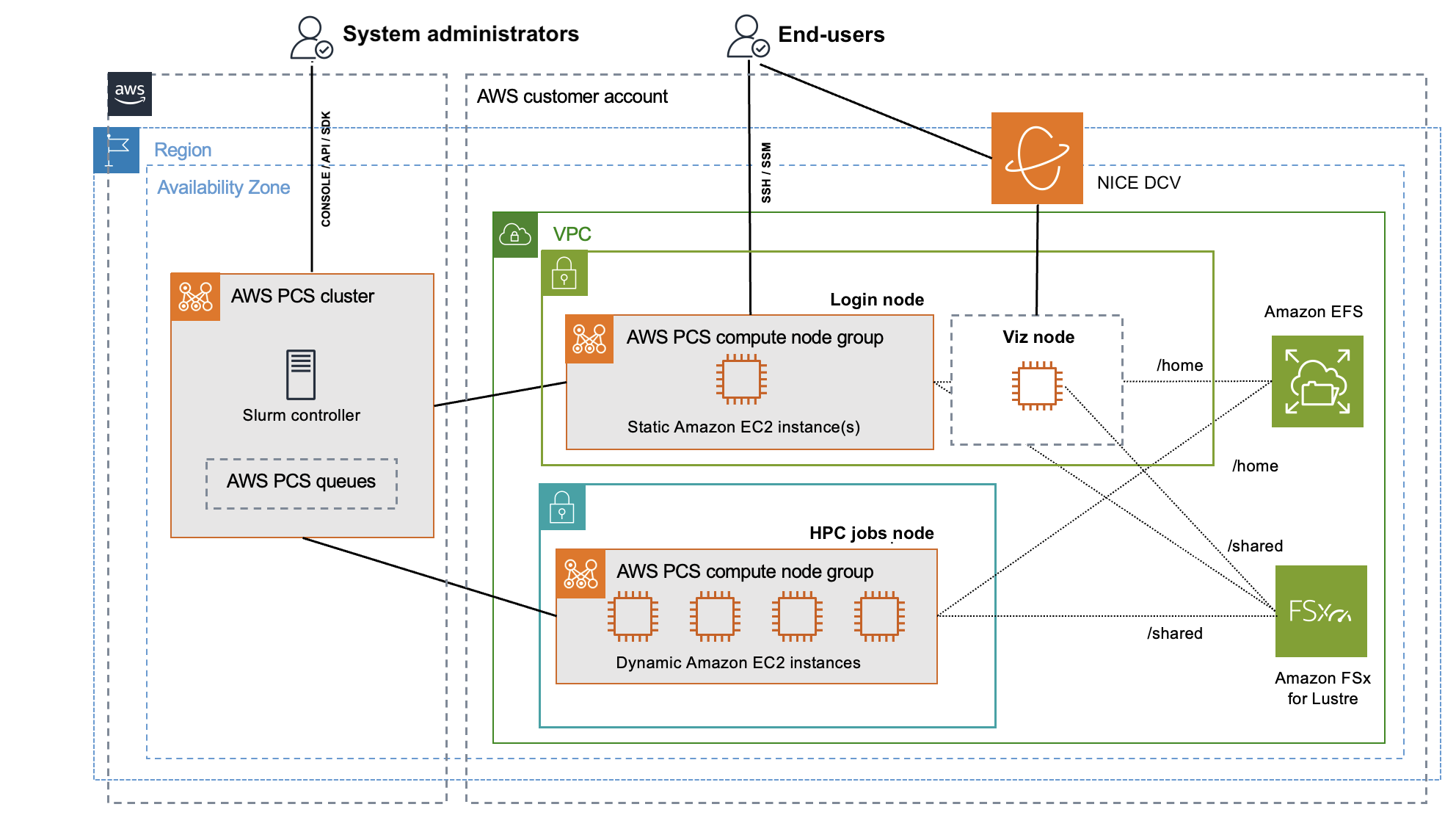
MMS • Steef-Jan Wiggers
Amazon Web Services (AWS) has announced the general availability of its new Parallel Computing Service (PCS), which aims to reduce the time required to process complex scientific computations significantly.
AWS has a history of innovation in supporting High-Performance Computing (HPC) workloads, with releases like AWS ParallelCluster, AWS Batch, Elastic Fabric Adapter, Amazon FSx for Lustre, and dedicated AMD, Intel, and Graviton-based HPC compute instances. Now, the company has released a fully-managed comprehensive HPC service with PCS to eliminate the heavy lifting of creating and managing HPC clusters.
System administrators can create clusters using Amazon Elastic Compute Cloud (Amazon EC2) instances, low-latency networking, and storage optimized for High Performance Computing (HPC) workloads. Scientists and engineers can rapidly scale simulations to validate models and designs with these clusters. In addition, the system administrators and integrators can also build and manage HPC clusters on AWS using Slurm, a popular open-source HPC workload manager. Initially, the service supports Slurm 23.11 and offers mechanisms designed to enable customers to upgrade their Slurm major versions once new versions are added.
According to the company, AWS PCS simplifies high-performance computing (HPC) environments managed by AWS and is accessible through the AWS Management Console, AWS SDK, and AWS Command-Line Interface (AWS CLI). Channy Yun, a principal developer advocate for AWS, writes:
AWS PCS uses Slurm, a highly scalable, fault-tolerant job scheduler used by a wide range of HPC customers, to schedule and orchestrate simulations. End users such as scientists, researchers, and engineers can log in to AWS PCS clusters to run and manage HPC jobs, use interactive software on virtual desktops, and access data. You can quickly bring their workloads to AWS PCS without requiring significant effort to port code.
In addition, users can leverage fully-managed NICE DCV remote desktops for remote visualization and monitoring HPC workflows in one place.

(Source: AWS News blog post)
In an AWS press release, Ian Colle, director of advanced compute and simulation at AWS, said:
Managing HPC workloads is extraordinarily difficult, particularly the most complex and challenging extreme-scale workloads. Our aim is that every scientist and engineer using AWS Parallel Computing Service, regardless of organization size, is the most productive person in their field because they have the same top-tier HPC capabilities as large enterprises to solve the world’s toughest challenges any time they need to and at any scale.
The company states that AWS PCS is intended for various traditional and cutting-edge workloads in computational fluid dynamics, weather modeling, finite element analysis, electronic design automation, and reservoir simulations.
The service is currently available in the US East (N. Virginia), AWS US East (Ohio), US West (Oregon), Asia Pacific (Singapore), Asia Pacific (Sydney), Asia Pacific (Tokyo), Europe (Frankfurt), Europe (Ireland), and Europe (Stockholm) regions. The pricing is listed on the pricing page.